For kids, nature is just outside the door
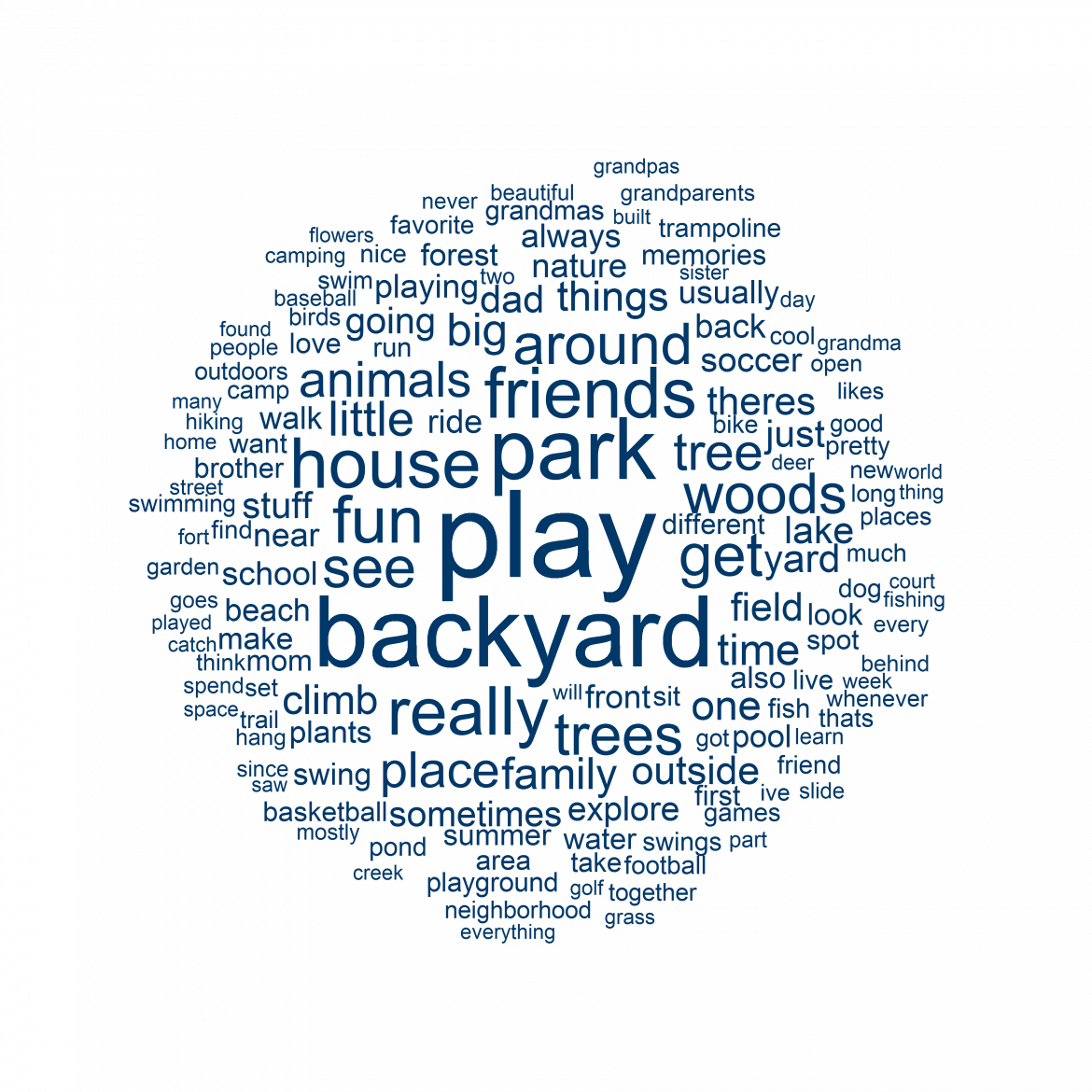
For children, their special place in the outdoors is literally right outside their door: in their back yard or front yard, around their house, or at a nearby park.
Question: "Is there any place outdoors that is special to you?"
N=771. Children 8-12 years old.
The 8 to 12-year-olds we studied thought of “nature” as wildlife, forests, and mountains—and also backyards, parks, and swimming pools. Plants and animals in their homes, such as dogs, cats, gardens, and flowers were all nature for these kids. Nature was not removed from daily life but was woven through it, easily accessed, and freely available for play and enjoyment.
Kids enjoy the natural world in a multitude of ways
The diverse group of kids we interviewed found many ways to enjoy the natural world. Most liked a range of activities, especially swimming, biking, visiting zoos, aquariums and nature centers, and exploring the outdoors. Large numbers of children were unfamiliar with activities like hunting, fishing, and boating.
Friends, family, and nature
For the kids in this study, contact with nature was generally a social experience involving family and friends. Contact with nature often involved playing outside with friends. The creativity of their play seemed limitless when the children described their experiences exploring and discovering amazing things, even in their own backyards. When asked about specific memories of playing in the outdoors, the kids often told of times with family and friends when they had new and unexpected experiences. It was promising to hear that most of the children interviewed had special times they wanted to talk about that happened in the natural world. These nearly always involved other people. Some examples of these memories included encountering a particular insect in the backyard, catching fish with a grandparent, swinging in a school yard, climbing trees with a brother or sister, watching animals, and wading in a creek with friends and relatives.
What keeps kids from spending more time outdoors?
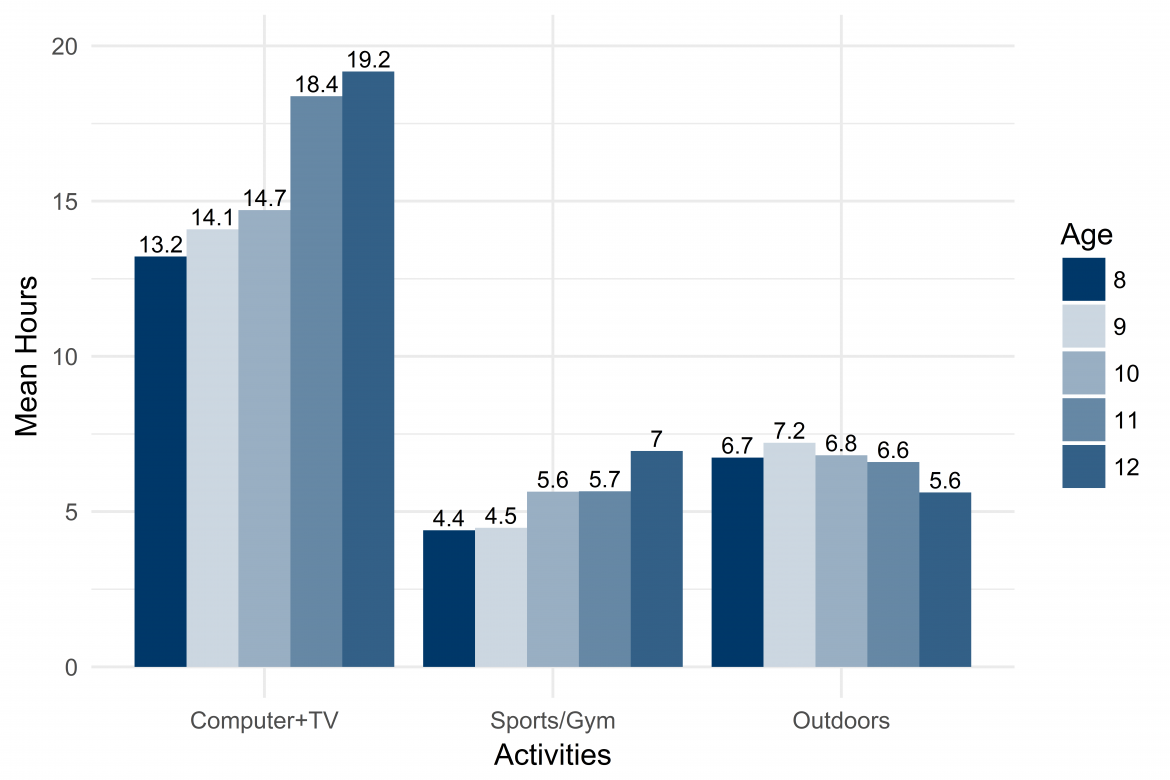
Media consumption increased among older children in our sample, while time spent outdoors decreased.
Question: "On average in a typical week, about how many hours does your child participate in outdoor activities when weather allows (not including organized sports)? In an average week, how many hours does your child participate in formally organized sports, including sports practice and gym classes at school? In an average week, how much does your child watch TV (network, cable, satellite)? In an average week, how much does your child use a computer, computer tablet, or smartphone, including time spent playing video games?"
N=771. Children 8-12 years old.
Children watched TV, played on computers, and played organized sports much more than they went outside. On average, older children spent less time outdoors than younger children did, while time spent with electronic media increased with age.
Kids recognize that being in nature is good for them
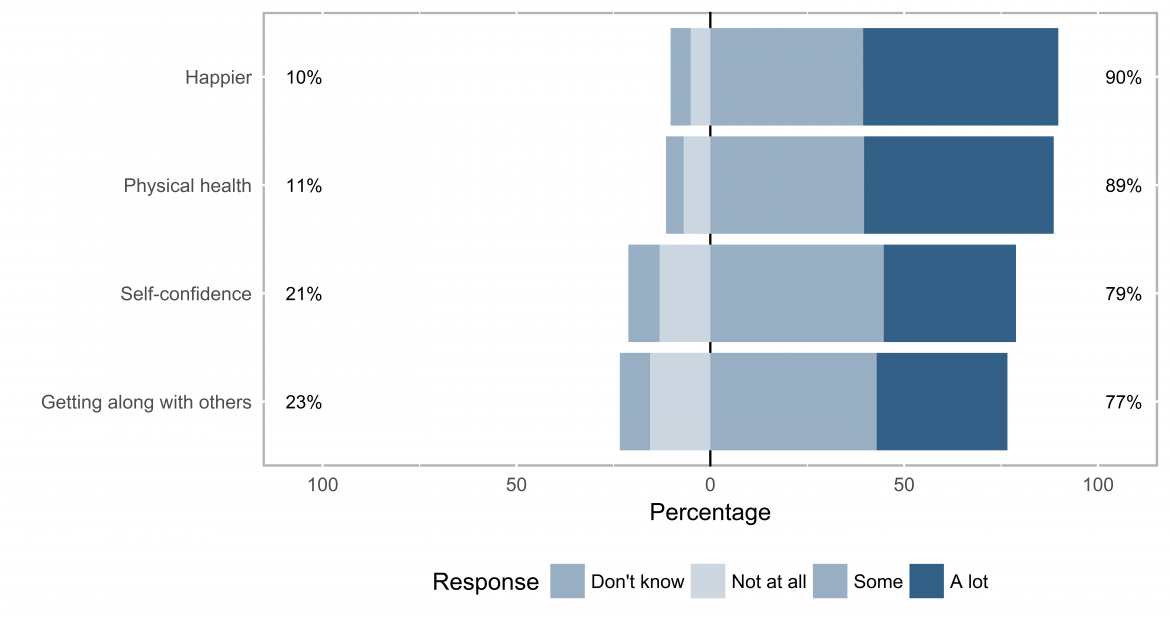
Most children think contact with nature makes them happier, healthier, more confident, and sociable.
Question: "How much do you think playing in the outdoors and nature has helped you with each of these parts of growing up?"
N=771. Children 8-12 years old.
And yet, even with the distractions of busy schedules and digital devices, most children recognized benefits from contact with nature. The kids interviewed said they felt happier, healthier, and more connected with friends and family as a result of being in nature.
Other barriers to experiencing nature, part 1
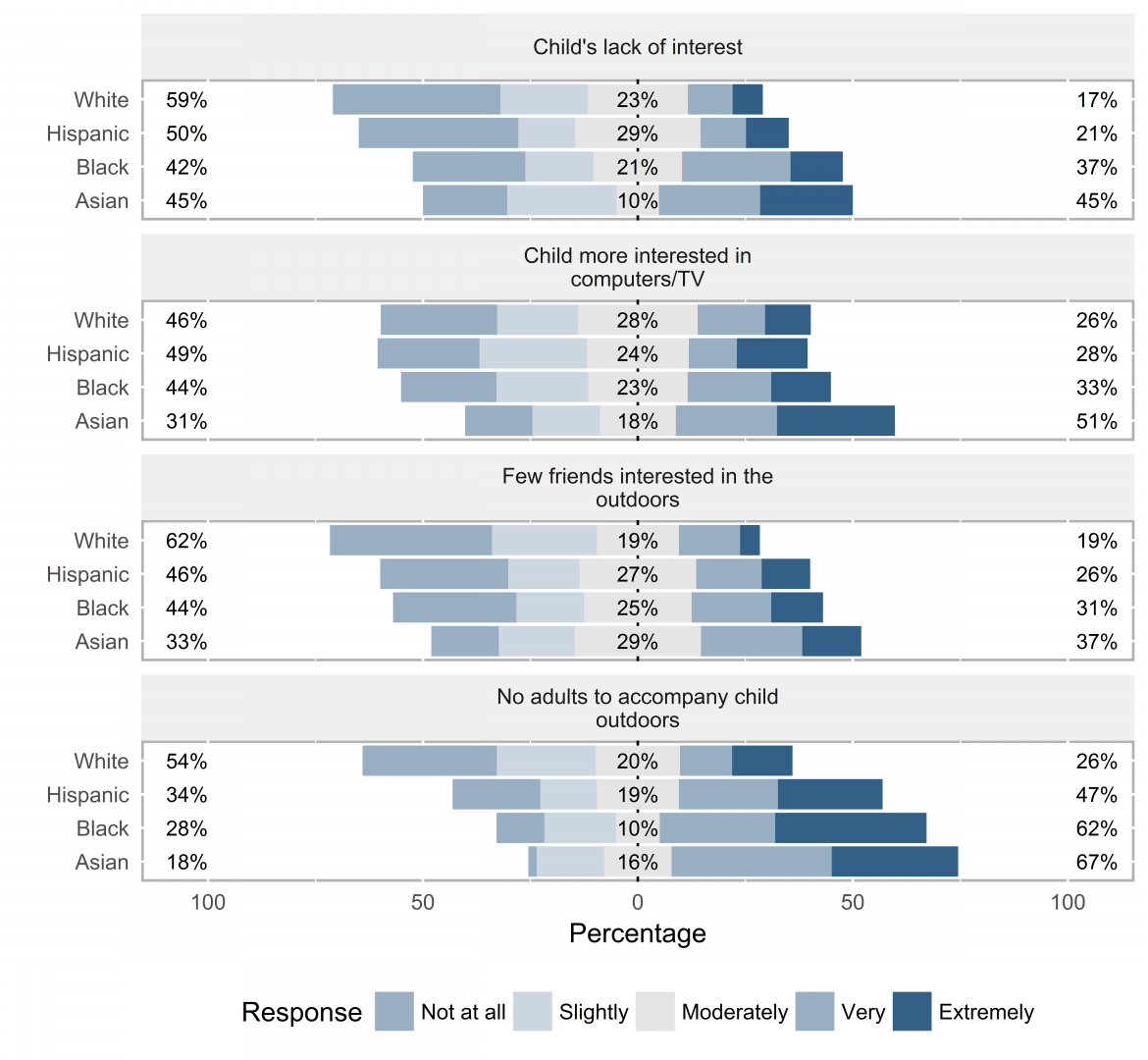
A variety of factors form barriers to the outdoors for different children, including interest in computers and TV and a lack of social support.
Question: "How important is each of the following in keeping your child from playing more outdoors?"
N=771. Children 8-12 years old.
Compared with parents of white children, parents of nonwhite children rated certain factors as more important in keeping their child from playing more outdoors. Parents of Asian and black children said their kids tended to lack interest in the outdoors, compared with white and Hispanic children. Hispanic, black, and especially Asian children lacked adults to accompany them outdoors. These results point to the importance of social support from family and friends in getting children outdoors.
Barriers to experiencing nature, part 2
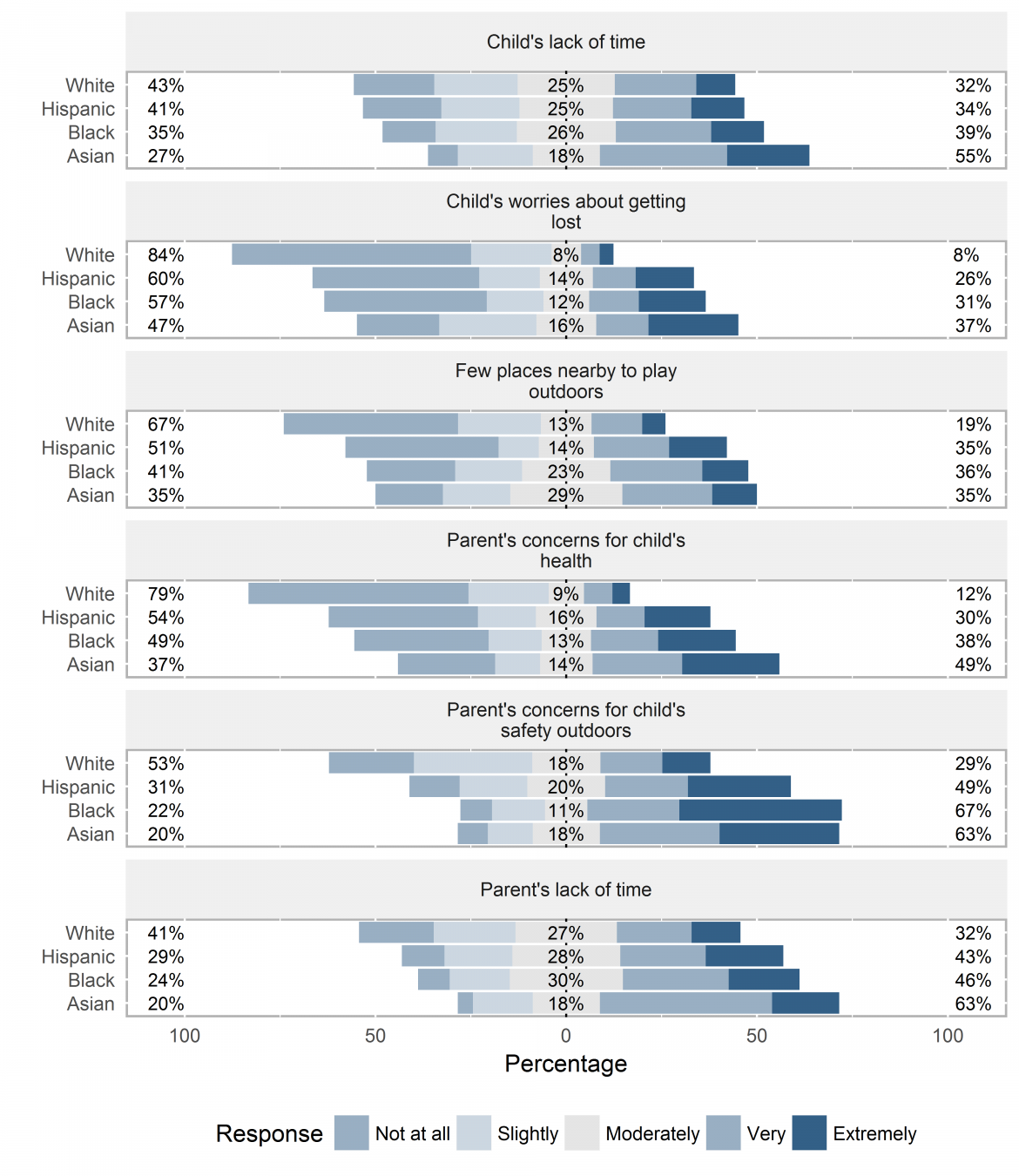
A variety of factors form barriers to the outdoors for different children, including concerns for safety and a lack of time.
Question: "How important is each of the following in keeping your child from playing more outdoors?"
N=771. Children 8-12 years old.
Compared with white children, black and Hispanic children and their parents were more concerned about things such as getting lost, few nearby places to play outdoors, and the child's safety outdoors. A lack of time was also a large concern for many parents of Hispanic, black, and Asian children.
